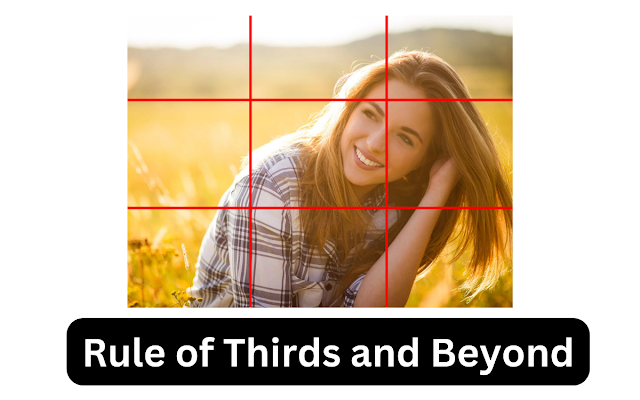The Art of Composition: Rule of Thirds and Beyond
Composition is a fundamental aspect of photography that can transform an ordinary image into a visually compelling work of art. While the Rule of Thirds is a well-known guideline, mastering composition involves a broader understanding of various principles and techniques. In this exploration of the art of composition, we delve into the Rule of Thirds and go beyond, uncovering additional strategies to enhance the visual impact of your photographs.
Rule of Thirds:
The Rule of Thirds divides an image into nine equal parts using two horizontal and two vertical lines. Placing key elements along these lines or at their intersections creates a balanced and aesthetically pleasing composition.
Tips for Using the Rule of Thirds:
Place the Main Subject Off-Center: Position your main subject along one of the gridlines or at an intersection to add dynamism to the composition.
Align Horizon Lines: When photographing landscapes, position the horizon along one of the horizontal lines to create a harmonious balance between the sky and the ground.
Utilize Negative Space: Allow empty spaces around your subject to draw attention and create a sense of simplicity.
Beyond the Rule of Thirds:
While the Rule of Thirds is a powerful tool, expanding your compositional repertoire can elevate your photography to new heights.
1. Leading Lines:
Use lines within your frame to guide the viewer's eye toward the main subject. Roads, fences, or natural features can act as effective leading lines.
2. Framing:
Frame your subject with elements in the foreground, such as archways, windows, or overhanging branches. This adds depth and draws attention to the central subject.
3. Symmetry and Patterns:
Capture symmetrical scenes or patterns for a visually striking composition. This technique works well in architecture, nature, and abstract photography.
4. Diagonals:
Incorporate diagonal lines to add energy and a sense of movement to your images. Diagonals can create dynamic tension and visual interest.
5. Fill the Frame:
Get close to your subject and fill the frame to emphasize details and create a bold, impactful composition. This is particularly effective in portrait and macro photography.
6. Golden Ratio:
Similar to the Rule of Thirds, the Golden Ratio involves a more complex grid. Composing your image according to this ratio can result in a visually pleasing and balanced photograph.
7. Center Composition:
While centering your subject is often discouraged, it can be a deliberate choice for certain shots. This works well for symmetrical subjects or when you want to create a strong focal point.
8. Rule of Odds:
Odd numbers of subjects in a frame tend to be more visually appealing than even numbers. Experiment with compositions involving three or five main elements.
9. Background Awareness:
Pay attention to your background to ensure it complements, rather than distracts from, the main subject. A blurred or simple background can make your subject stand out.
10. Dynamic Tension:
- Create tension by placing contrasting elements within your frame. This could involve contrasting colors, sizes, or shapes to add visual interest.
Experimentation and Practice:
The key to mastering composition is experimentation and practice. Don't be afraid to break the rules or combine multiple techniques to create unique and captivating images. Each scene is an opportunity to refine your compositional skills and develop your own visual language.
Conclusion: Craft Your Visual Narrative
Composition is an art form that allows you to tell a compelling visual story. Whether you're using the Rule of Thirds, experimenting with leading lines, or embracing symmetry, understanding and applying these principles will empower you to craft images that resonate with viewers. Elevate your photography by embracing the art of composition, and let your creativity shine through every frame. Happy shooting!





